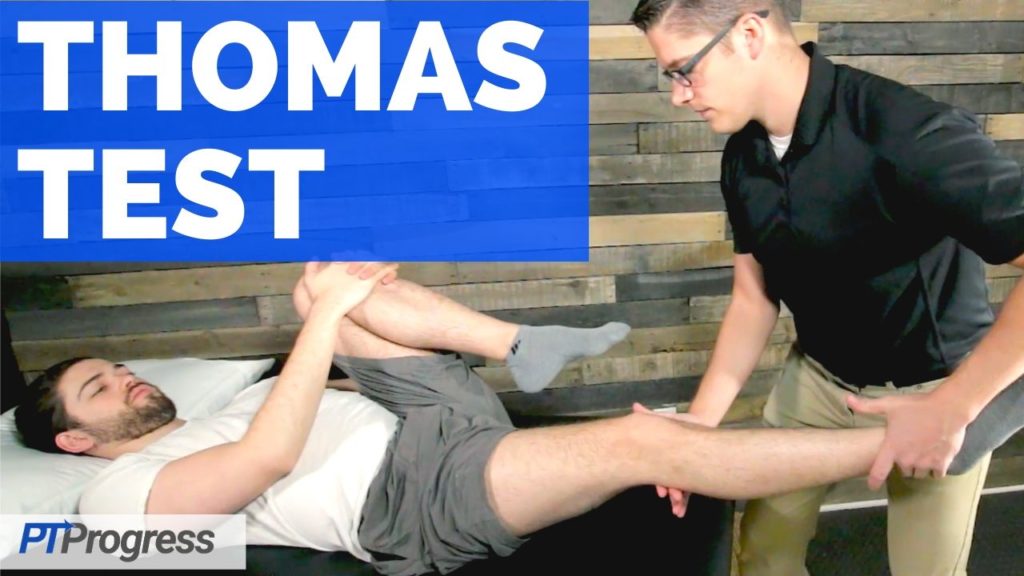
The Thomas test is used to rule out hip flexor contraction as well as psoas syndrome. Clinically we use this test to help identify factors contributing to hip flexor tightness.
How to Perform Thomas Test
Position of Patient: The patient should be relaxed in the supine position as the examiner checks for lumbar lordosis (a common predictor of hip flexor tightness).
Performance: The examiner will flex the patient’s hips bringing both knees towards the chest. Instruct the patient to hold one knee as you passively extend and lower the hip to be tested. If the tested leg does not reach the table, the test is considered positive for hip flexor shortness.
How to Interpret Thomas Test
Positive Finding: If the patient’s hip is unable to reach the table with the knee fully extended or flexed, the iliopsoas is considered the key contributor to hip flexor tightness. If the hip reaches the table upon extending the knee, this will suggest tightness of the rectus femoris muscle.
Test Accuracy / Reliability / Evidence:
κ = .60 (prestandardization)
κ = .88 (poststandardization)
Source: Cibere J, Thorne A, Bellamy N, et al: Reliability of the hip examination in osteoarthritis: effect of standardization. Arthritis Rheum 2008; 59: pp. 373-381

